A UK couple bought a former DHL van and spent a year turning it into a tiny home on wheels take a look at how they did it
Amanda Goh

- Charlie Low and Dale Comley spent a year turning a former DHL van into a tiny home on wheels.
- They did everything themselves — and then wrote a van conversion guidebook to help others.
When Charlie Low and Dale Comley first met in the Dolomites in 2016, they realized they had much in common: a shared love of climbing, a passion for DIY projects, and an interest in van life.
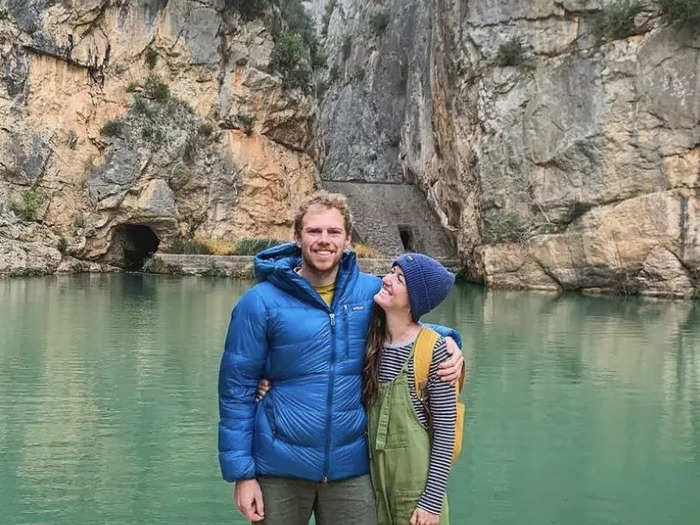
The pair hit it off immediately and found a partner in each other for all the things that they wanted to do — including converting a van into a home.
"In the climbing community, van life is quite popular," Low told Insider. "It's kind of synonymous; A lot of climbers tend to have vans because it lends itself to the lifestyle of traveling and climbing, following good weather."
After a few years of living a conventional lifestyle, Low, who has a background in physics, and Comley, an engineer, decided they wanted a change.
The pair originally wanted to convert a van while working full-time before taking a year off to travel, Low said.
But the pandemic forced them to change their plans. Instead of a one-year trip, the couple ended up quitting their 9-to-5 jobs, moving into their van completely and starting their own business, she added: "Now it's just a way of life rather than a year."
First on their list of priorities for the conversion was picking a van. They were looking for a former fleet vehicle, and found an ex-DHL van that fit all their requirements.
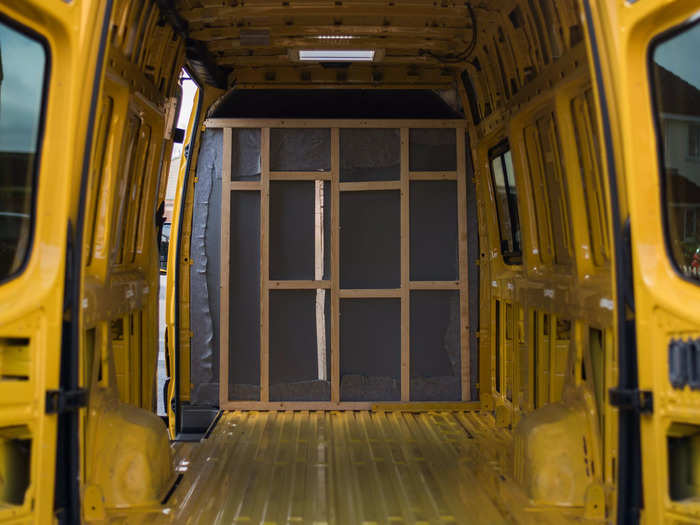
"We had done a bit of research and those tend to be looked after quite well because they've been regularly serviced and they're retired after a few years," Low said.
In addition, the pair wanted something that was easy to drive around and able to achieve high mileage, Comley told Insider.
They ended up buying their van from a company that dealt with former fleet vehicles, and Comley estimates that they paid around £8,800, or $10,680, for it.
Converting the van was not an easy task: It was empty, with no insulation, electricity, and water supply.
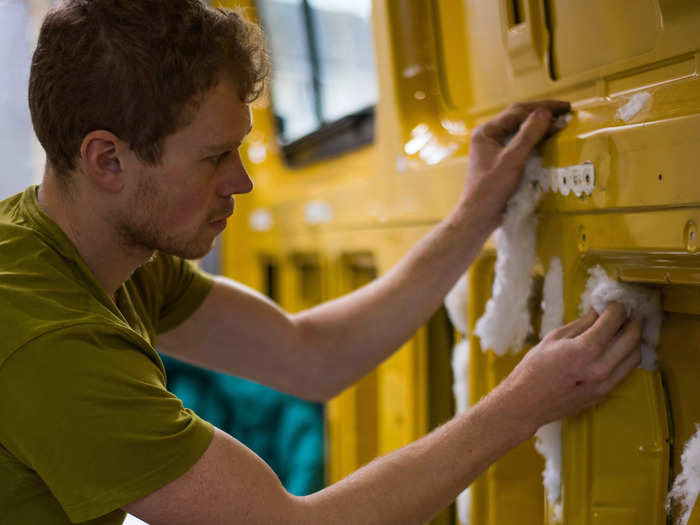
Much had to be done before it could be considered a home.
"You go through a very similar process to what you would for a brick-and-mortar house," Comley said. "You've got construction, plumbing, electrics, all of those things, but in a confined space and on a smaller scale."
Although they both had some home DIY experience, converting the van was the biggest project that they had ever undertook — and they did everything themselves, Low added.
One of the main challenges that the couple faced was not having a proper space to work, and that slowed down their progress.
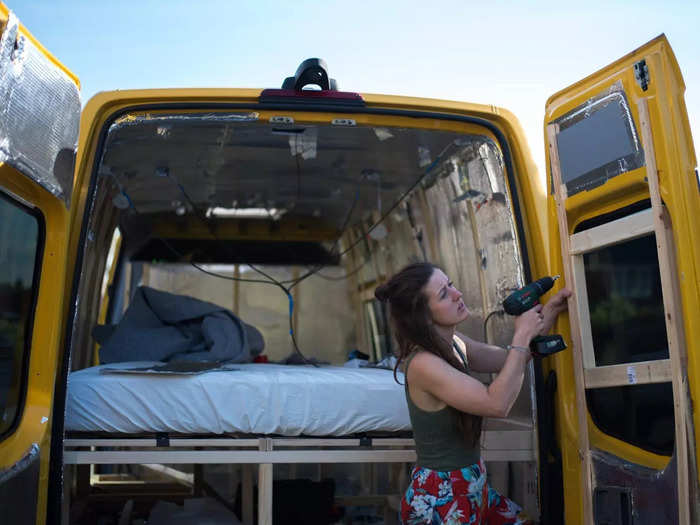
The couple had been living on a steep street in Bristol, UK, and didn't have a garage or workshop to renovate their van.
Every other weekend when they had some spare time, they would drive over to her mom's place, work on the van, and drive home when they were done, Low said.
"We were working on my mom's driveway, which slowed everything down a lot because you're constantly bringing things in and out and you don't have a level surface to work on," she added.
In particular, Low and Comley were worried about how the electrical and gas systems in the van would turn out.
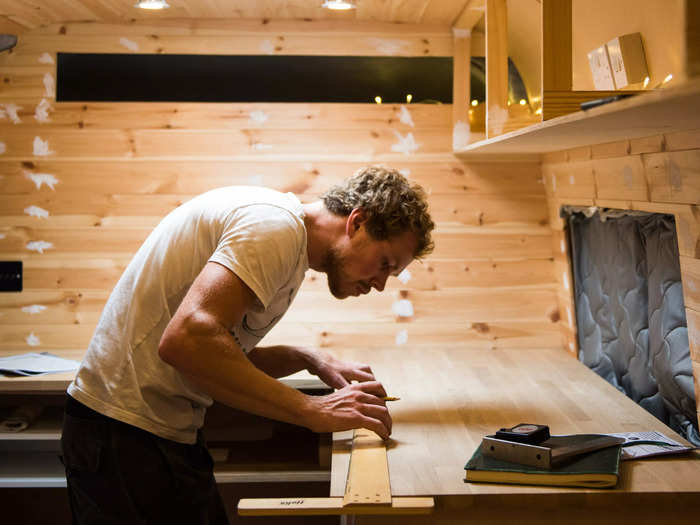
"Typically the things that people are most worried about are the dangerous things. Like gas inherently feels scary because something can explode," Low said. "Similarly with the electrical system — if you get it wrong, it can be quite dangerous."
Even with their technical knowledge, the couple realized that the lack of a definitive guide about building an electrical system for a van made things hard.
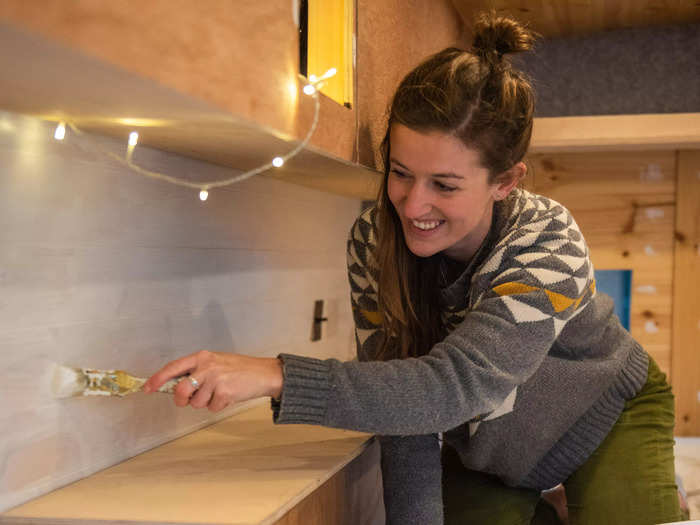
"We had to watch YouTube videos, read blog posts, do all of this research, and we would still order things and be missing a part, or something arrives and it's not quite right," Low said.
They ended up taking four weekends to get all the right pieces they needed before they could start wiring the van.
"It was definitely the easiest to get wrong," Comley said.
Low and Comley started their project in February 2019 and completed it a year later in March 2020. However, they were only able to move into the van in April 2021 due to the pandemic.
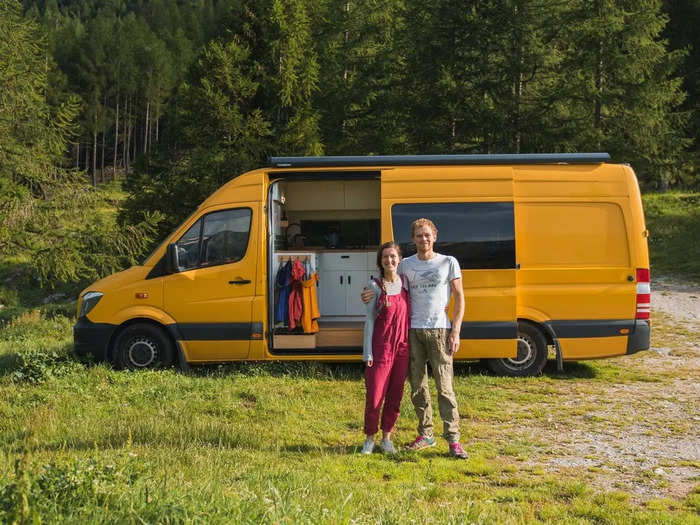
The couple worked on their van almost every other weekend but took a three-month break from the project during the year, Low said.
"In terms of actual time spent, it's probably the equivalent of if we'd spent three months full-time working on it," she added.
After the pair moved into the van, they rented their Bristol property out to their friends.
"I think some people, when we say, 'Oh, I live in a van,' it's almost like they take slight pity on you, but we do very much do it out of choice," Comley added. "For us, it's just a much better way of living."
The completed van is made up of two primary sections: the sleeping area on one end, and the kitchenette on the other.
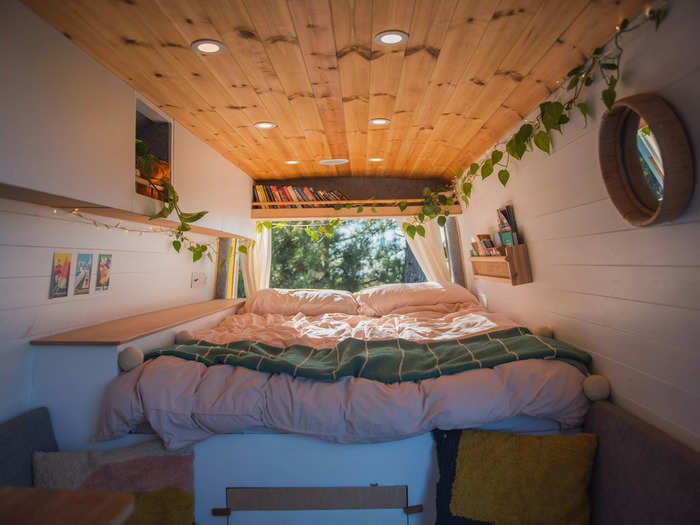
For Low, the most rewarding part of the process was seeing how everything came together.
"Once you've built everything and get to the decorating stage, it suddenly goes from feeling like a half-finished van to a home in the space of a couple of weeks," Low said. "It's quick progress and it feels like you're really putting your mark on it."
For Comley, satisfaction came from realizing that the things they had built were functioning as they should.
"It's that pivotal moment of flicking the switch and going 'It works!'" he added.
The van has an off-grid electrical system that's powered by solar panels and a battery-to-battery charger.
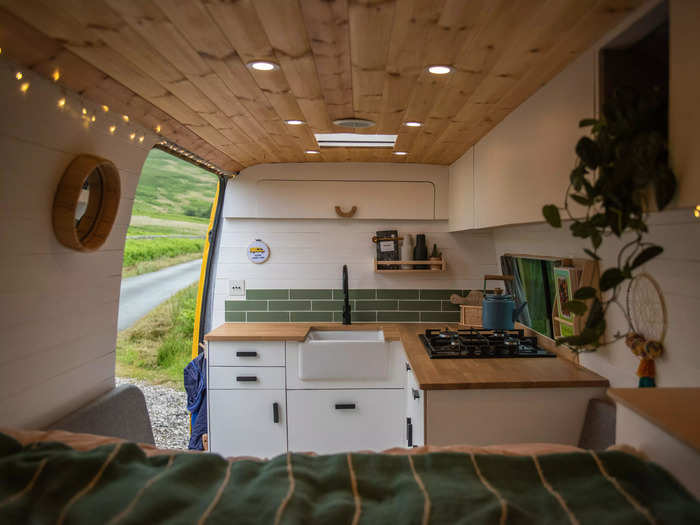
The battery-to-battery charger on the van connects from the starter battery to the leisure batteries via the vehicle's alternator, Low said. Leisure batteries are used to power appliances and other electrical items in the van.
When they're driving, the alternator will recharge the vehicle's starter battery and the leisure batteries at the same time, Low said.
"So essentially whenever it's sunny, the solar will recharge the leisure batteries and whenever we drive, the alternator will recharge the leisure batteries as well," she added.
There are two parts to their bathroom setup: a hidden composting toilet and an outdoor shower using a tankless water heater.
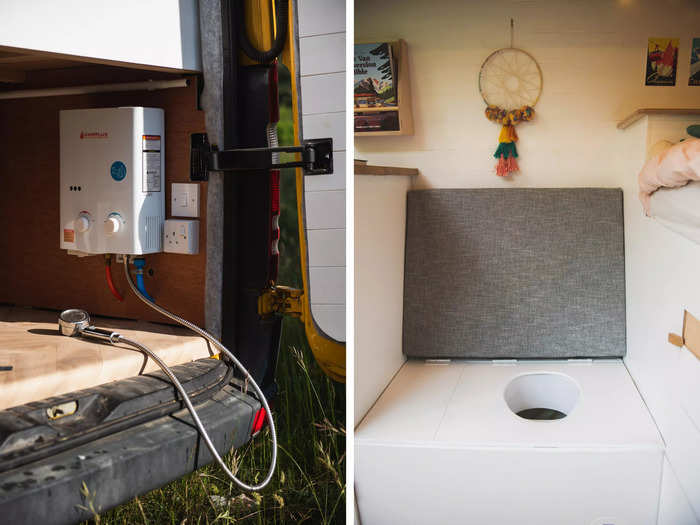
The composting toilet is hidden under the cushion of a seat, and all waste goes into a septic tank that they empty about once a week, Low said.
To save space, they use an outdoor shower setup with the tankless water heater placed in the back of the van where the doors are.
"For the outdoor shower, we just have a curtain that we can put up and pull across to have a bit of privacy," she added.
The couple's water supply comes from a 70-litre tank that usually lasts 10 days to 2 weeks depending on their usage.
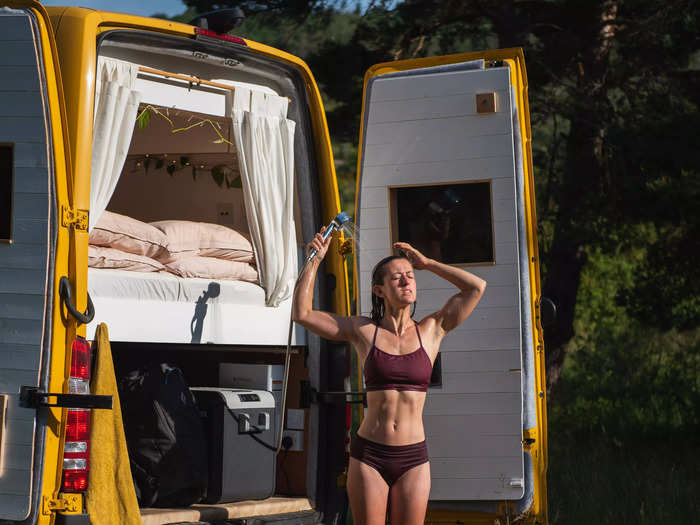
The water tank is filled up with tap water from campsites and petrol stations, Low said. To ensure that their water supply is clean, they have a UV and charcoal filter to process the water before they drink it.
"Our water usage is actually really, really low because there's no dishwasher, there's no washing machine, there's no bath. Even with a 70-litre tank, you actually don't need to refill it all that often," Comley added.
Inspired by their own experience, the couple ended up writing a van conversion guidebook to help others on their journey.
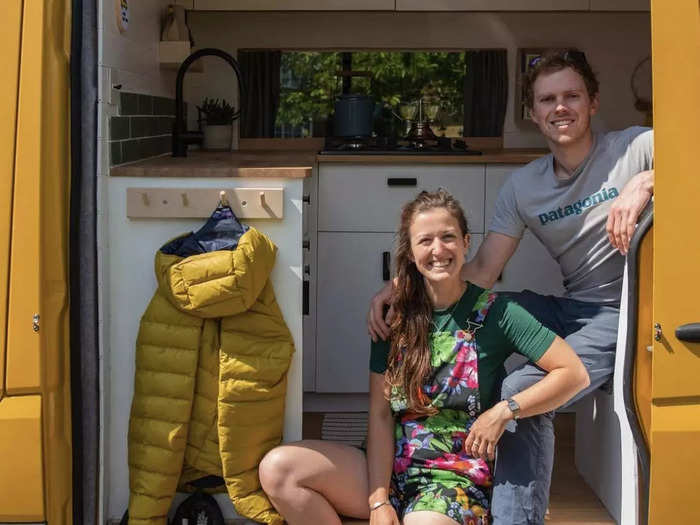
Despite their backgrounds being well-suited to converting a van, there were still countless things that they weren't aware they had to consider in the first place.
"The realization was we basically do this for a career and we are still making some mistakes. So how's someone that doesn't design things every single day going to get on?" Comley said.
Released in March 2021, their book won an award in the 30th Annual Writer's Digest Self-Published Book Awards, according to an email from Writer's Digest that Insider has seen. The full awards list will be revealed in the March/April 2023 issue of the magazine.
The 331-page book includes detailed gas, water, and electrical system diagrams, as well as cost details about converting a campervan.
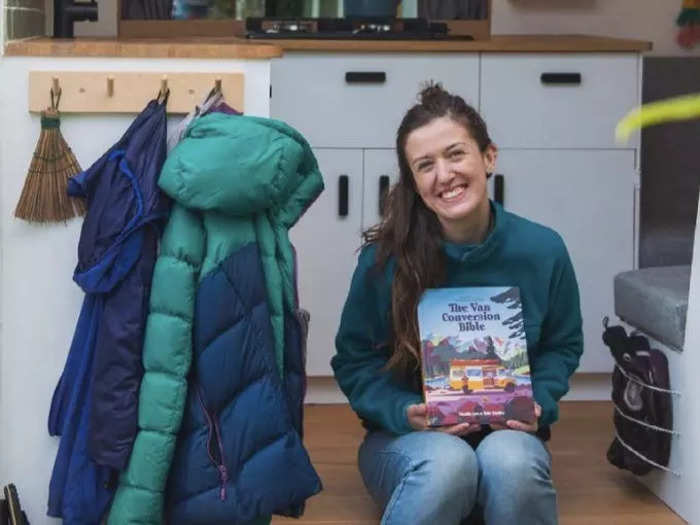
An ebook costs £18, or $22, while a hardcopy costs £36, or $44. Both versions are available on their website.
The couple has sold more than 10,000 copies of the guide so far, according to screen grabs of their store dashboards that Insider has viewed. They're also releasing a US version of the book in April, with imperial units as well as updated electrical voltages.
The couple eventually decided to quit their jobs to live in the van and even launched their own campervan and off-grid electrical system design service.
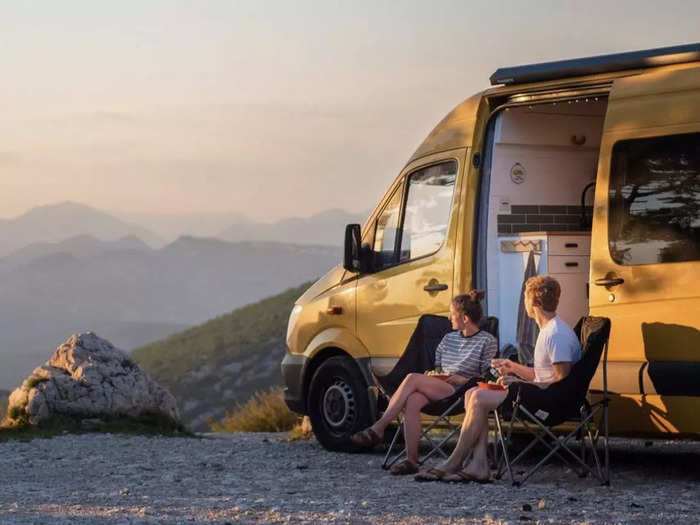
The decision to start the business was motivated by the desire to help others who are interested in converting a van by solving their electrical design issues.
"Electrical systems for campervans are made up of literally hundreds of different components, and it's so easy to get one element wrong and that causes problems," Comley said.
Part of their service includes proposing an electrical system design with product recommendations and creating a step-by-step installation guide for their clients.
"We don't charge for the service at all. It's entirely free, the way we make our money is just on the commission of the components," Comley said.
Their business employs seven staff members who are also working nomadically while traveling in campervans over Europe, he added.
It's been almost two years since Low and Comley started living in the van, and they're planning to go on a year-long road trip in the US in April.
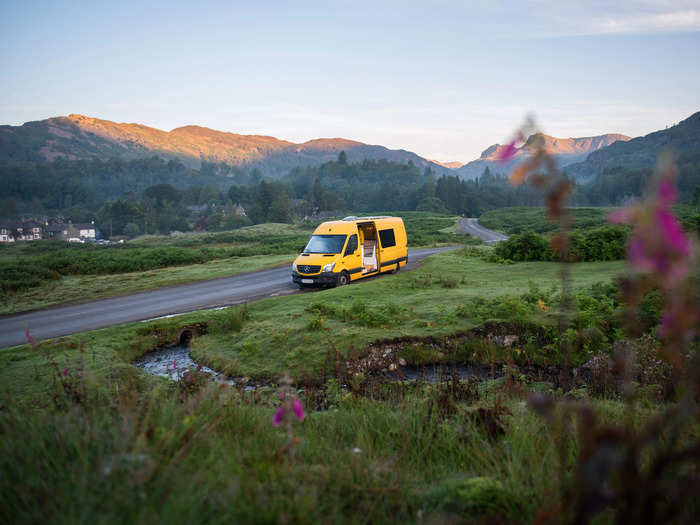
They're hoping to coincide their trip with the US launch of their book, Low said. They also have plans to expand their electrical design business to the US market around the same time.
"I think one of the nice things in writing the book and creating this business has been enabling other people to live that alternate lifestyle as well," Comley added.
Popular Right Now
Popular Keywords
Advertisement